
Live-streaming, private traffic, and KOC defined the year 2019 for social media marketing. What’s the trend for 2020?
Highlight of 2019
Live-streaming
Taobao live-streaming made a big buzz this year. Taobao live-streaming Daily Active Users increased by 130% to 41.33 million during the Single’s Day.
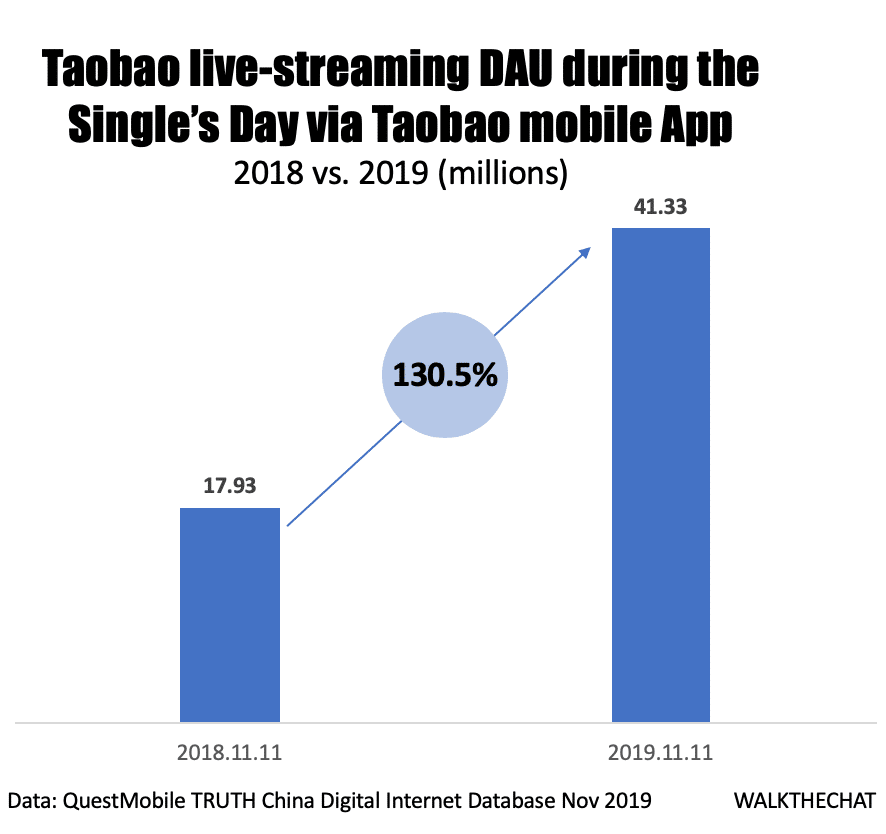
Top KOLs like Li Jiaqi and Viya made headlines of their record-breaking 1 billion RMB and 2.7 billion RMB Gross Merchandise sold during 2019 Single’s Day sales.
Kuaishou, the No. 2 biggest short video Apps, is taking live-streaming to another level, recording 100 million live-streaming DAUs by December 2019.
Private traffic (私域流量)
Large brands such as Ctrip and Perfect Diary masters the management of private traffic via WeChat groups. Using chat automation tools such as WeTool and chatbots, admins are able to manage hundreds of WeChat groups at the same time.
Key Opinion Customers (KOC)
Brands started to run the KOC (micro-influencers) campaign on algorithm-driven platforms like Douyin, Xiaohongshu, Weibo, and Bilibili. Working with hundreds of KOC, and selective large influencers, startup brands like Perfect Diary and HomeFacialPro are able to beat their international competitors.
Social media marketing trend in 2020
Better quality live-streaming campaigns
Most of the live-streaming campaigns today are simply sales pitches. Content quality is not too different from the most traditional TV infomercial. Even for brands with the largest live-streaming audience, such as Xiaomi, Adidas and Kiehl’s. This used to make sense since traditionally live-streaming target particular audiences who are price-sensitive and have lots of free time.
Influencers like Li Jiaqi are changing the audience mix, bringing first-time users from top tier cities. These users will demand much higher quality content.
Users watch Li Jiaqi not only for discounts but also for the unique shopping experience: bringing tier 1 celebrities like Yang Yang, the engagement with his Little Assistant often terms out to be the highlight; limited quantity created lots of excitement for customers.
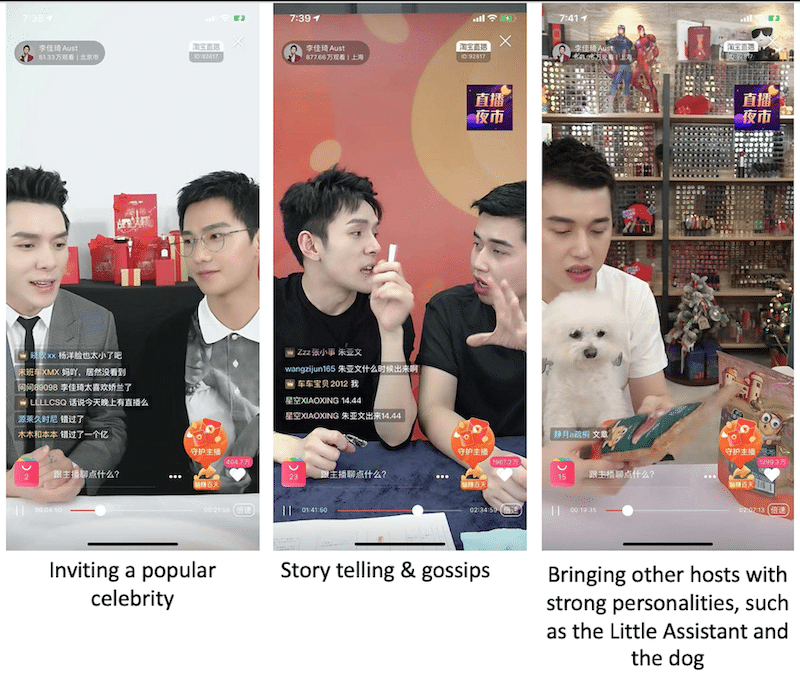
In 2020, brands will be expected to deliver a similar live-streaming experience:
- Bring a charismatic host that portrays the brand image
- Creative & educational content
- Incentives that engages viewers
- Inviting KOLs to brand’s live-streaming channel to create excitement
- Shifting away from merely sales pitch
- Focusing more on metrics such as likes, comments, re-share, new follows
Automated WeChat groups with smarter chatbots
Private traffic, often WeChat groups, is a great way to build engagement. It’s also the most effective way for up-sale. Today most of the groups are managed by human or simple bots with limited automation and it could soon be changed.
Some of the group is already implemented bots to assists with answering questions. For example, Li Jiaqi’s WeChat group is operated by both human admin and chatbot.
The chatbot could answer requests such as:
- Announce the schedule of the next live-streaming campaign
- Give a warning if someone mentions another KOL’s (ie Viya) name
- Send out a survey to gather user information
- Weather report & fortune-telling upon request
- Invite a new user to the group via a keyword
- Recommendation of lipsticks based on specific keyword

Smarter chatbots could help brands to save time and maintain the order. It’s still important to have human admin and even some active fack users to keep the group active.
WeChat Work will centralize part of WeChat group traffic
WeChat Work, the business communication tool build by WeChat, released version 3.0 this week. Here are the new features:
- WeChat customer group limit increased from 20 to 100
- Employees can post on WeChat Moment
- Video conference for up to 25 people with the screen-sharing ability
- Calendar
- Document sharing with access control via cloud
- Basic messaging feature such as “reply later”
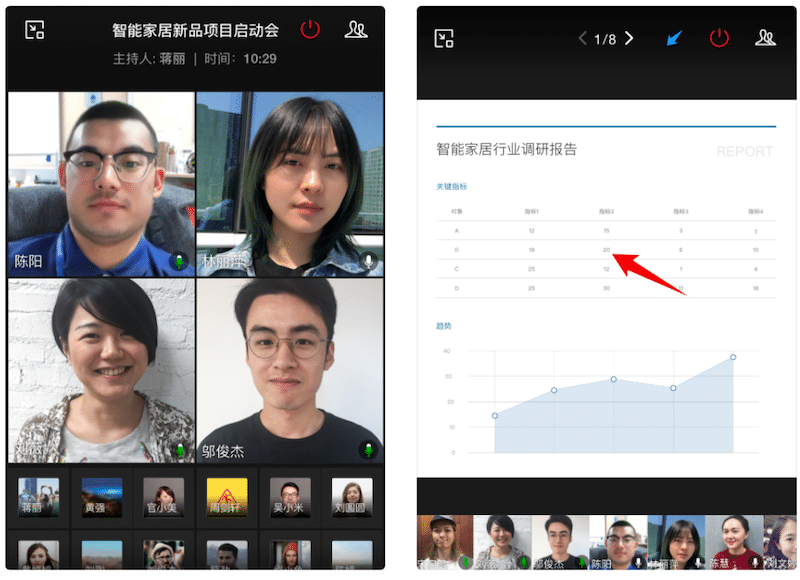
WeChat Work now has 2.5 million registered companies, 60 million active users.
Compared to other 3rd parties CRM/WeChat automation tools such as WeTool, features of WeChat Work still seemed premature. Lots of limitations on user acquisition features, no chatbots, no message automation, and not even able to manage a normal 500-person WeChat group. But for larger companies, WeChat Work brings much-needed data security. With newly added conference and calendar features, WeChat Work will require more enterprise users.
On the other hand, Alibaba continues to improve Dinding; Bytedance pushing Slack-like platform Lark; even Huawei pushing WeLink. Each are bringing a unique platform to improve business productivity.
Chinese brands disrupting social media marketing
More local brands are competing directly with international brands, and they are reinventing digital marketing.
Some of the best marketing campaigns of this year was launch by local brands.
Perfect Diary is now valued at 1 billion USD, famous for its Xiaohongshu KOC strategy and WeChat group marketing. It’s also active on Douyin and Bilibili.
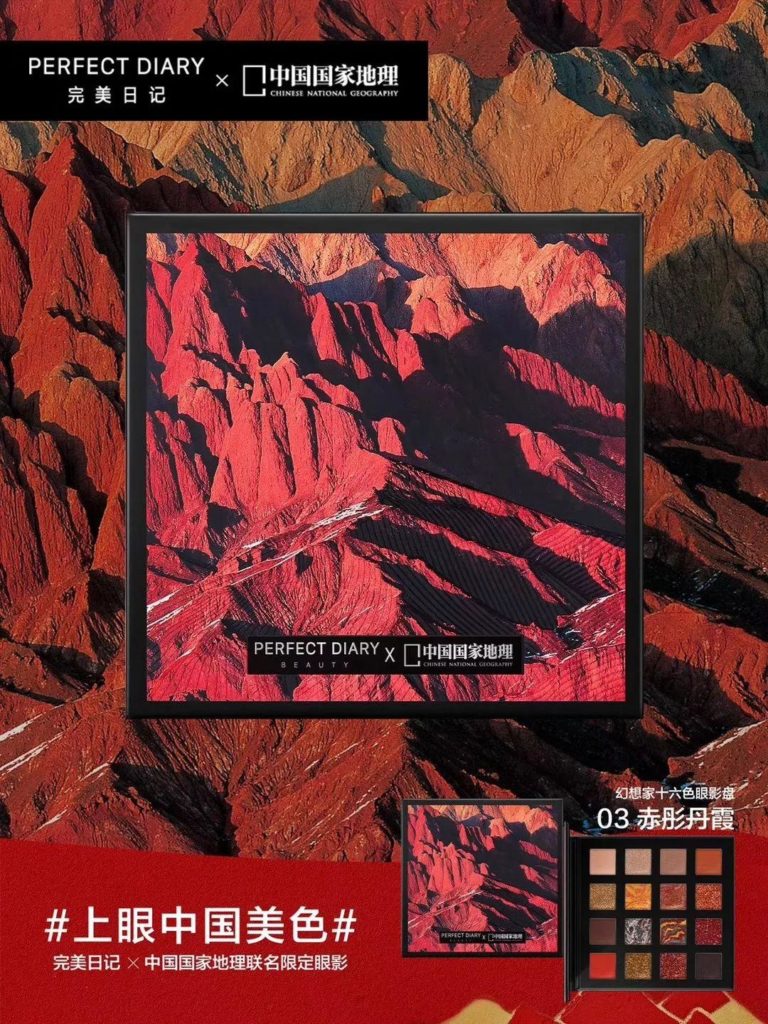
PROYA created the Douyin campaign of the year by investing in 200 KOLs to promote its Bubble Spa Mask. The campaign went so viral that PROYA sold 1 million boxes of bubble facial mask in a month, and 3-month accumulated sales reached 300 million RMB. One of the top influencer 斗个好物 brought 70 million impressions.
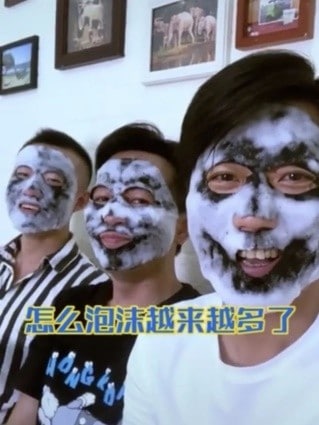
The Baidu Index for Bubble Mask shows the sudden increase of search demand in August 2019 during the Douyin campaign.
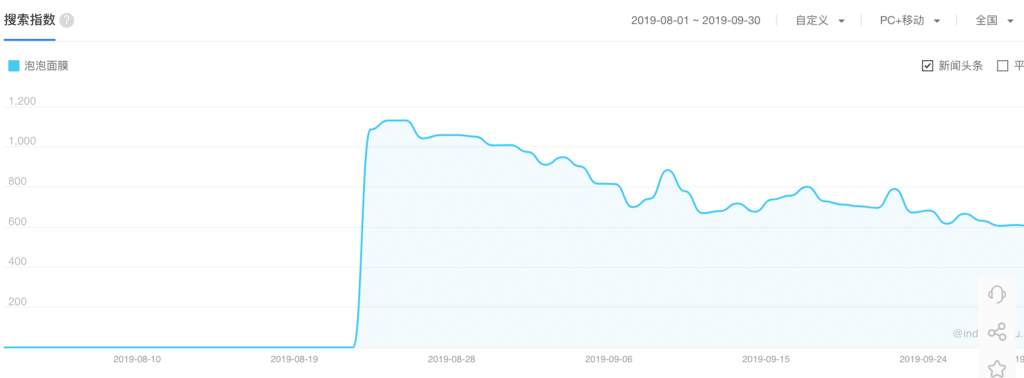
Girlcult, a local cosmetics company just received 900K A round funding. They are collaborating with Kobitos, a popular cartoon figure. Girlcult work with KOLs on different channels with brand promotions.
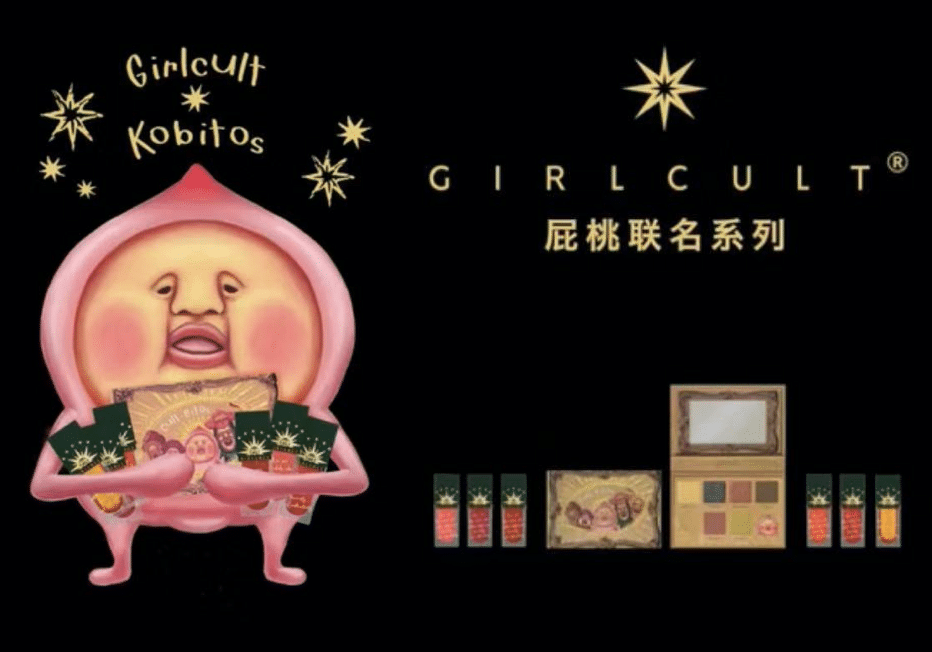
Cosmetics, skincare, premium fashion industry are traditionally dominated by international players. New Chinese brands have the advantage of low-cost, understanding the customers and quick reaction to social media trends.
The local brands will be the clear winner on social media next year.
KOLs moving upstream
It’s common for influencers to launch their own brand. Top WeChat fashion influencer Becky Lee launched her own clothing line in 2017, and now her Mini Program store has almost 200 SKUs.
Li Jiaqi is planning to launch his own lipstick brand earlier next year. By just redirecting part of his traffic to his own brand, he could greatly increase the margin diversify the risk.
And the No. 1 Taobao live-streaming KOL Viya is planning to launch a sourcing platform, connecting live-streaming KOLs with brands. She’s aiming to improve the efficiency for brands that are looking for live-streaming KOLs. Platforms like LOOK, Yunji have been quite successful by providing similar services on WeChat.
KOLs’ source of revenue in China is a lot more diverse compared to western ones. We expect KOLs to come up with more creative ways to monetize social media traffic.
Data synchronization will be more crucial than ever
Brands often find it difficult to synchronize user data across Tencent, Alibaba, and Bytedance. But the marketing strategy of the future should be based on the complete user picture.
Some Chinese brands such as HomeFacialPro has an advanced incentivize system for driving users between WeChat Tmall. It’s Douyin and Bilibili account are also constantly driving traffic to Tmall. By integrating data from all the channels, the brand can pain a full picture of the users.
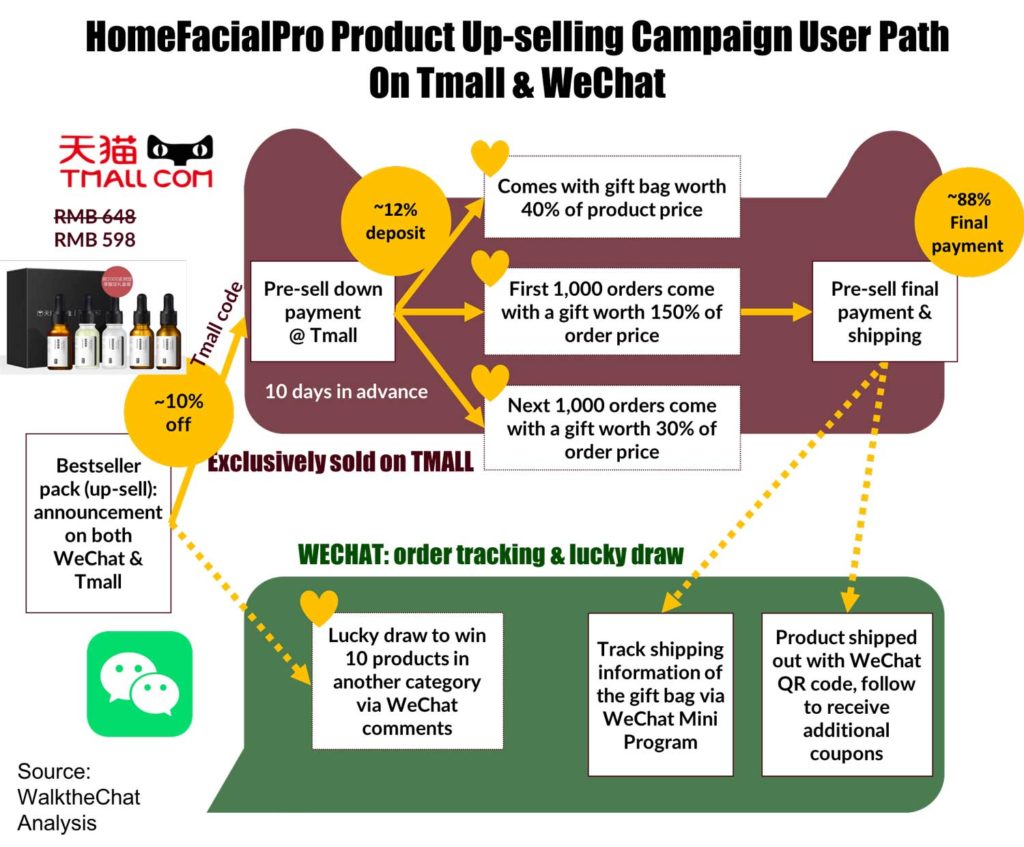
Conclusion
Digital marketing changes are more dramatic than ever, users are changing how they consume content, Bytedance keeps growing and strong competition from the Chinese startups. Brands should closely observe the latest trends, experiment with new marketing techniques and set up a flexible plan to adapt to the radical changes that are about to come.
The post 2020 China Digital Marketing Trend appeared first on WalktheChat.
